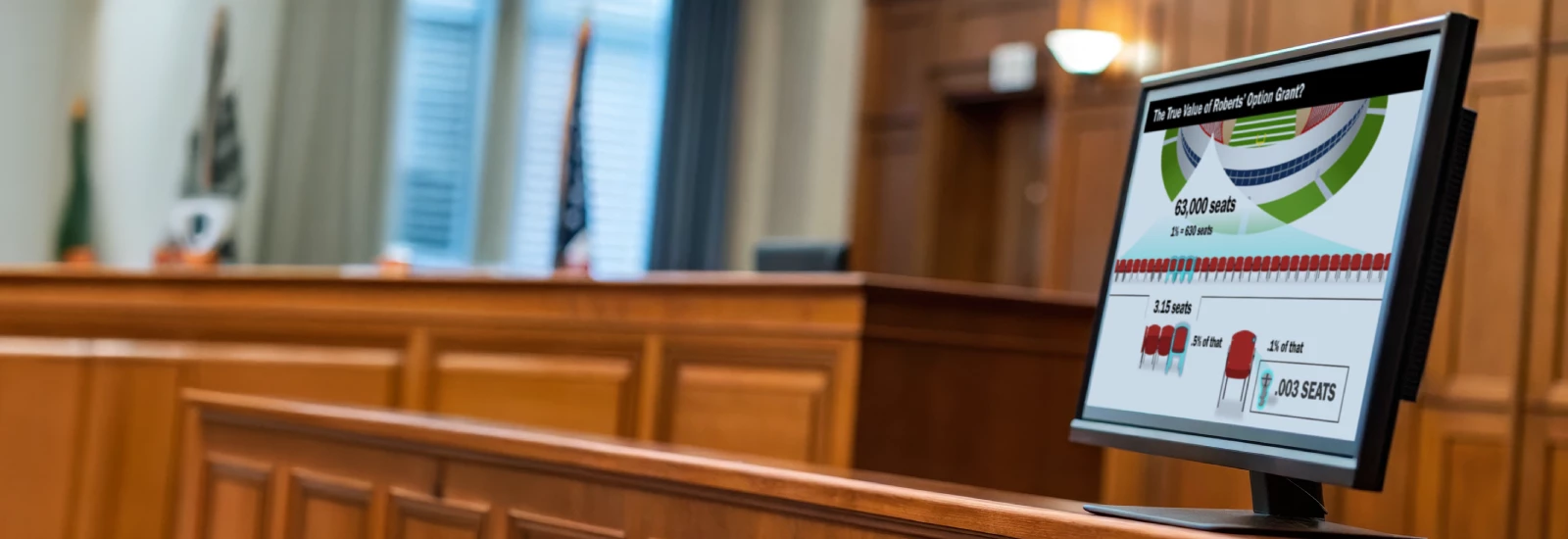In high-stakes securities disputes, legal teams worldwide often face a pivotal challenge: how to convey complex financial concepts to a judge, jury or arbitration panel that may not be familiar with the industry or the relevant legal framework. The risk is evident: adjudicators cannot rule in your favour if they do not grasp your case narrative. Strategically using themes, analogies and visuals in your presentation could be the deciding factor.
At IMS Legal Strategies, our consultants specialise in bridging this crucial communication gap. Chris Dominic and Michelle Cooper, Esq., recently joined a LinkedIn Live discussion on how dispute resolution lawyers can utilise storytelling tools to make even the most technical securities cases both accessible and memorable for the full spectrum of legal decision-makers.
Making the Complex Simple
As a former securities fraud litigator, Michelle Cooper understands just how difficult it can be to translate legal arguments into narratives that audiences can follow both emotionally and logically. Her transition to visual advocacy stemmed from a desire to make trial and arbitration presentations more engaging and effective. Chris Dominic echoed this view, noting that while securities cases are grounded in law and figures, those deciding the outcome need relatable, real-world comparisons to remain engaged.
That is where analogies come into play. From “cherry-picking evidence” to “tightrope-walking investors,” analogies offer mental shortcuts that make intricate claims easier to digest. For claimants, themes of trust and betrayal often resonate, while the defence may lean on reasonableness and sound business judgement. Both sides benefit from visual metaphors – such as two identical gift boxes, one filled with value and the other empty – to illustrate misrepresentation or broken promises.
Using Themes That Resonate
Chris and Michelle explained that aligning visual storytelling with legal themes enhances clarity and cohesion. For claimants, a “broken promises” theme linked to breach of fiduciary duty can clarify otherwise abstract responsibilities. On the defence side, visual aids that depict buyer’s remorse or hindsight bias can help challenge simplistic assumptions of liability.
When addressing loss causation – a concept that can elude audiences – visual analogies like a broken bridge, a falling domino or a weak chain link can underscore the need to prove more than just harm. As both consultants noted, these analogies frequently appear in jurors’ notes and sketches, indicating they continue to influence decision-making even after the lawyer has concluded their arguments.
Addressing Corporate Distrust
One of the defining challenges in today’s litigation environment is the increasing public scepticism towards large corporations. As Michelle observed, there is a prevailing “profits over people” sentiment, which can predispose jurors to side with claimants. This anti-corporate attitude extends beyond public liability cases and affects securities matters involving publicly traded companies. While all adjudicators are entrusted with neutrality, public sentiment is powerful in shaping unconscious bias.
Chris reinforced this point, explaining that dispute resolution strategies have evolved accordingly. Rather than attempting to portray a company as benevolent, legal teams are better served by contextualising business decisions and demonstrating how alleged misconduct ultimately harms the company itself.
This approach reframes the narrative to align with people’s expectations and highlights the real-world consequences of corporate behaviour – an increasingly vital tactic in an era of declining trust in institutions.
Gaining the Visual Advantage
Chris and Michelle also agreed that no securities dispute should proceed to arbitration or trial without a visual timeline. “Every time we conduct a mock trial and there isn’t a timeline,” Chris noted, “some juror says, ‘I really needed a timeline.’” Timelines help decision-makers anchor key facts in a logical sequence and can clarify causation, such as showing whether share prices fell after misleading statements were issued. Additional visuals – such as comparative damage graphics or stacks of cash – help quantify losses, while side-by-side comparisons of promised versus delivered outcomes can highlight deception or support reasonable conduct.
Michelle also emphasised that people are rarely persuaded by spreadsheets, but they do remember a compelling image, analogy or theme. These mental anchors become tools that adjudicators can use during the decision-making process, thus transforming passive listeners into advocates.
Elevating Your Strategy with IMS
Securities cases are seldom won on facts alone; they require a compelling narrative. Whether you are defending an FTSE 100 company or representing shareholders, IMS consultants help translate complex data into visual stories that resonate with judges, jurors and arbiters on a human level.
Contact our team at imslegal.co.uk to learn how IMS can support your securities litigation strategy with thoughtful visual advocacy.







